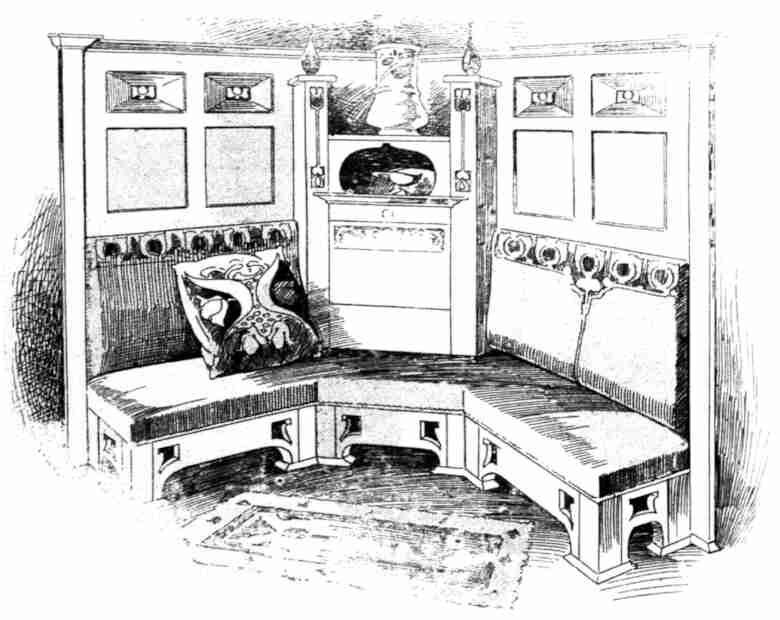Modern English furniture fashions

The whims and vagaries of Dame Fashion are so noticeable and so changeable in the matter of dress, that the august lady is often considered to rule over no other world. But, as a matter of fact, although changes in costume attract more attention than those in other matters which affect our comfort and well-being, yet there is a fashion in furniture, in its way, as arbitrary and as varying. True, the changes cannot, for obvious reasons, be so sudden as those in affairs which do not involve the same amount of expense, but changes there are, remarkable when one comes to examine them, even in our own conservative native land.
The last two issues of The House have illustrated the latest trends from the Continent. Our September issue devoted space to the decline of the Art Nouveau style. Everyone will understand that a certain amount of this recent foreign work is imported into England. Notwithstanding this, a distinctly English version of the style is in existence, and anyone who, for business or pleasure, spends time in the studios or showrooms of the best cabinetmakers and decorators, notices advances and modifications which will not come to the eye of the public for a long time. Such is the anglicised version of the Modern Style.
In the process of naturalisation, the extreme and immoderate features of the style have been toned down. The result is a dainty, if somewhat subdued, form of furnishing and decoration. Anything like the multiplication of detail, and the limit of choice which characterised the eighteenth-century work, is out of the question here. Natural forms are, for the most part, the motifs, but with that amount of conventionalising necessary in decorative work. What will be missed, among the chairs and tables is the well-known cabriole leg. Its place is taken by straight lines, with here and there a little simple metal enrichment or cut-through work.
In the cosy corner illustrated, while comfort is secured, and a certain unmistakable decorative feeling introduced, there is nothing flowery or in any way over-ornamental. The window seat in the full-page illustration possesses the advantage of showing how aptly leaded glass may be used in connection with this style.
Unfortunately, window decoration, until recent years, has degenerated into a kaleidoscopic display of pieces of vulgarly coloured glass, or else, and it is horrible to contemplate, the panes simply form the base for transparent coloured paper, supposed to afford decoration. The swing of the pendulum brings us back to simple ornament without colour, in most cases made of pieces of glass cut out and leaded together. This does not interrupt the view, and yet gives much space for that decorative feeling which is so evidently required.

Two other illustrations show, one, a fireplace, and the second a small chimney corner. The overmantel in the first is simple in character and supported in rather a curious way by several plain wooden columns. These do not altogether prevent the heat from getting round the corners, and perhaps their extreme novelty is an excuse for their appearance in a place for which otherwise they would be somewhat unfitted. The chimneypiece in the other illustration has everything to recommend it. The tiles introduced in the two breasts are a specially commendable feature. They assist in throwing out the heat as well as forming a very pretty patch of colour. Altogether those of artistic tastes will welcome the appearance of this new spirit into a style of furnishing where inspiration is, indeed, needed.





